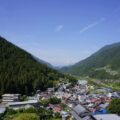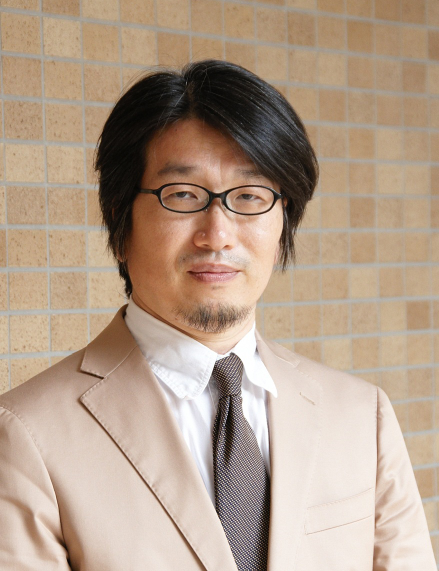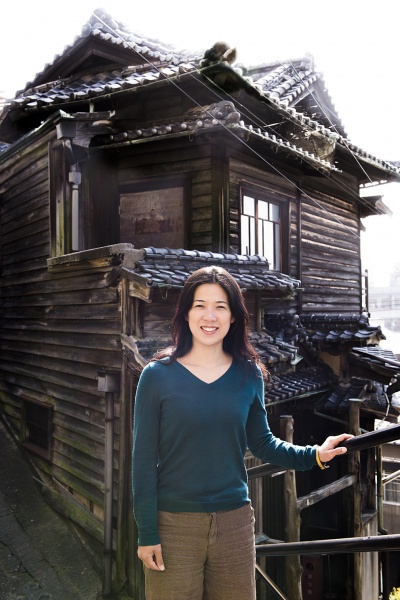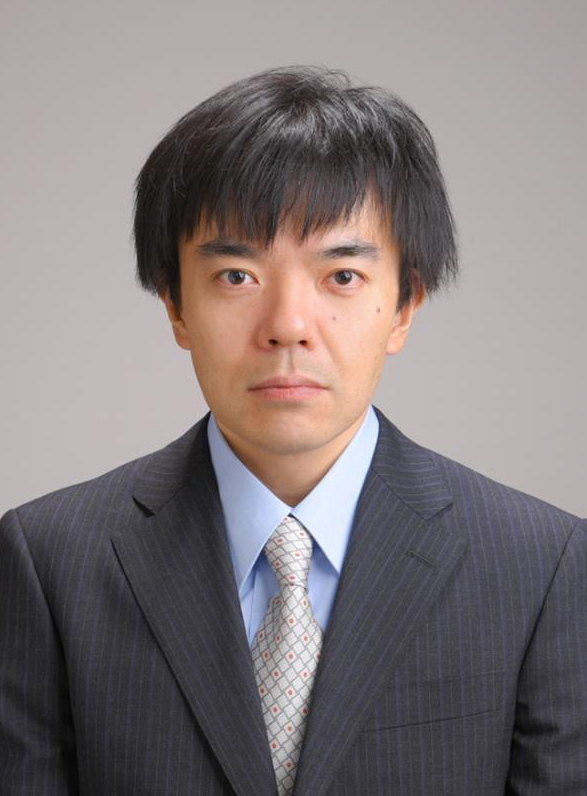Fourteen days as a COVID-19 in-flight close contact: Binary opposition from the perspective of border control measures and the inner workings of Japanese society
Kariya Takehiko, Professor, Oxford University
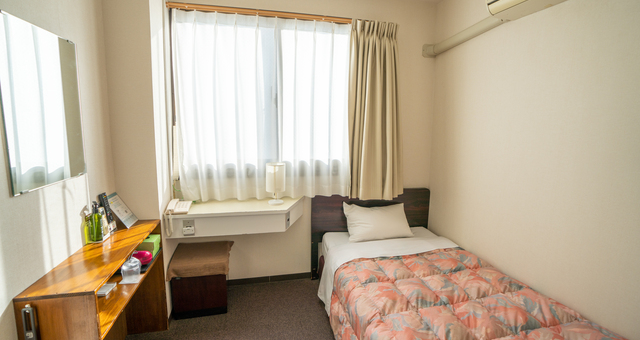
“I saw a subtle transcendence of broadminded binary opposition that tolerates both good and evil during fourteen days as a COVID-19 in-flight close contact.”
Photo: Torunet / PIXTA
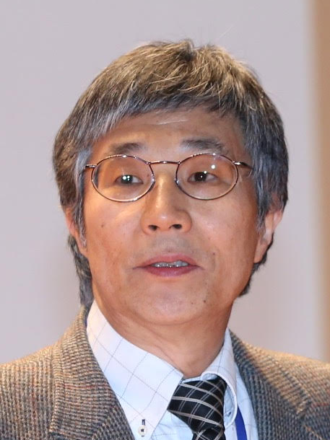
Prof. Kariya Takehiko
Arrival (December 20, 2021)
At 15:40, the London to Tokyo direct flight touched down at Haneda Airport after a flight of a little less than twelve hours. When I booked the flight in October 2021, arrivals who had been double-vaccinated were exempt from quarantine at a facility. By December omicron variant infections were spreading in South Africa and there were also signs of the virus in Britain (53,945 confirmed infections on December 2, 2021). So, regardless of whether you were vaccinated or not, arrivals from Britain were required to spend six days in quarantine. Still, I was optimistic that I would clear quarantine in six days.
After arrival, we were asked to wait in the cabin for thirty minutes for reasons of coordinating the barrage of formalities about to start. I was a little tense after leaving the plane and entering the terminal. In Oxford, I had spent two years working from home and I had not been in a crowd of people for a long time. The departure formalities in London had been quick, but I was resigned to a long wait to enter Japan at Haneda.
To start with, passengers arriving from countries with a requirement for mandatory quarantine were separated from the rest. After confirming the country of residence, the passengers on my flight were given a yellow-green card (six day quarantine) to wear on the wrist. Then we lined up for the entry formalities while adhering to social distancing. Once we had stepped into this moving line, each of us were automatically directed to the appropriate quarantine facility. In hindsight, it was a commendable operation for turning a request into an automatically enforced quarantine.
The entire terminal for international flights was partitioned so that the moving lines would not intersect and we moved through the space by following arrows. The certificate of a negative test result before entering Japan, the health questionnaire, and the written pledge were checked through acrylic barriers. The staff in charge wore masks and face guards. Meanwhile, we had to take an antigen test, which was processed by saliva testing. I was handed a funnel-shaped piece of plastic and a test kit for collecting saliva, which I filled with saliva up to the indicated mark. Possibly because of my age, I could not immediately produce enough saliva to fill the test kit up to the mark. One by one the people who had arrived at the same time as me handed in their test kits and proceeded to the next section, but I fell behind. I felt flustered.
Walking again. Next, the MySOS app, which is used to confirm your location after entering the country and to send health information, was checked and explained to us. The email address for contacting us on the smartphone and the app that provides location information were also checked.
Walking again. Large numbers of chairs had been placed in the space that is normally used as the boarding lobby and we all sat down to wait for the test results leaving one empty chair between us in keeping with social distancing. I also kept my distance and sat down.
The test results are communicated at intervals of five to ten minutes by calling out four-digit numbers for a dozen people at a time. After a little while, the numbers before and after mine and some numbers with higher values had been called. Mine had not been called yet. After about an hour I started to feel a little uneasy. Had I tested positive? Had the sample not been extracted properly? Feeling anxious, I asked a staff member near me who told me that the time it takes to get the result differs with individuals. My number was called before the conversation ended. I went to the counter as instructed and was told that I had tested negative. I felt relieved. Then the group of around ten persons whose numbers had been called at the same time were asked to line up, sit down, and follow the instructions to proceed to the entry formalities. After the passport check, luggage retrieval and customs clearance, we were moved to a location where we waited for a bus. After waiting about twenty minutes, we walked about thirty meters to a bus stop. Considering that I would spend the next six days in a room where I could not open the windows, this was a precious, though short, moment of contact with the outside air. About ten large buses were parked in the parking lot. They were the private buses taking us to the quarantine facility.
We boarded one of the buses and waited for the departure. It took as long as thirty minutes before everyone had boarded the bus possibly because there were several families with children in the same line. The reason for the delay was the time it took to load all the bags on the bus. The bus windows were shut. The family right next to me never stopped talking. There were also crying babies. I wondered if the risk of infection was not greater than on the plane. It was a long half-hour. I was also anxious about which facility we were heading for. I had heard that some people had been driven more than an hour to facilities outside the metropolis. I sent my wife a LINE message about the start of the Mystery Tour and she replied, “I see. It would be nice if you could enjoy the experience!”
The driver did not announce any destination even after the bus at long last started moving. Within minutes I was surprised to hear an announcement that we would shortly arrive at our destination. The bus stopped at a hotel near the airport. The new hotel had been leased by the government as a quarantine facility before it opened for business.
We were instructed to get on the elevator to go to the hotel reception on the third floor. When my turn came, the receptionist was a Southeast Asian staff member who explained what to expect during the stay in slightly idiosyncratic Japanese. I was handed the key card for the room, a thermometer and then the check-in was completed. I picked up a boxed evening meal and a bottle of green tea at the elevator and headed for the room on the tenth floor. It was a neat single room with a view of the Metropolitan Expressway and Tama river when I opened the curtains. I looked at the clock. It said 8:40 pm. It had taken five hours from arrival at Haneda to entering the room. I felt lucky because I had heard that some people had taken more than twelve hours.
Looking back on the day, what strikes me is the complex and large-scale operation that unfolded at Haneda Airport. Several staff supported every checkpoint. The staff who checked the app settings were Asians, but they spoke fluent Japanese. Later on I did some research on a staff recruitment site where I found ads for part-time jobs and temporary staff to handle the entry formalities at Haneda Airport. The ads specified an hourly wage of 1,250 yen. No experience necessary, beginners welcome, students welcome, freelancers welcome, CV with gaps welcome, mid-career (40s and up) welcome. Operating and creating a complex system, outsourcing to the private sector, employing temporary employees including foreigners—everything seemed to run smoothly, but improvements must have been made to get to this point.
First Quarantine Period (December 21–26)
The first six days were spent in mandatory quarantine managed by the government. As far as I know, almost all countries have required arrivals to pay the cost of their stays at quarantine facilities. Some countries even charged as much as 200,000 yen or more. In contrast, the Japanese government assumed the full cost of accommodation during quarantine in Japan. Arrivals to Japan can only increase.
At the hotel where I stayed, all meals were placed outside the door and we were informed over the public address system when the meals were ready. The meal boxes were slightly chilled, but not having eaten Japanese food in a long time, I was pleased to see that the meals included Japanese-style boiled food. Fried food was quite frequent perhaps to please younger people. Green tea in paper bags was also included. Personally, I did not feel any dissatisfaction with the meals.
However, we were not allowed to take even one step out of the room. To counter the lack of exercise I did my own version of stretches and squats to stop the muscles from weakening. I also had two PCR tests during these six days. The test kit was left on the outside door handle and I returned it to the door handle after leaving the sample in the container. There was no human contact at all. Both results were negative. I had no problems with my physical condition and my appetite was fine.
Five or six times a day, I was contacted on the MySOS app. To confirm my location, I pressed a button on the smartphone. I was also contacted on the smartphone three times a day at random times. We had been instructed to send a thirty-second video recording of the face so I turned my bearded face to the smartphone camera. I had the impression that the phone was linked to GPS to confirm my location.
Other than these points of contact, I was basically free the whole time, but how do you keep mentally fit during six days in a small single room? Some people must experience mental anguish. As a sociologist I focused on recording every detail of the experience. I turned this “valuable” experience into material for researching Japanese society. I thought that I could give some meaning to those six days by focusing my mind in this way. The outcome is this essay.
Then, on December 21, I had phone message at 9:44 in the morning.
“We have confirmed that someone on the plane you boarded has tested positive for COVID-19. Once again, we would like to remind you to comply with the written pledge you submitted at the airport including reporting your state of health and location information and quarantining at your home or accommodation for fourteen days after entering the country. We are currently investigating the in-flight close contacts. If it is highly likely that you are a close contact, you will be contacted separately by the Health Monitoring Center for Overseas Entrants or by a healthcare center, so you do not need to contact your healthcare center. Please pay attention to any changes in your condition.”
It wouldn’t be over and done with in six days! The following morning, I had a telephone call from the healthcare center in N city where I live. They told me that I was a close contact since a traveler infected with the omicron variant had been identified on my flight. I was asked about my state of health, medical history, any medications and so on. Possibly because I was a close contact, they treated me very politely and the manner of listening was kind. I was told that if there was a vacancy in a hotel provided by the prefecture, they would like me to transfer there. They said that a car would pick me up and take me to the hotel. The prefecture would pay for the transportation cost. This is where I would leave the government-managed system and pass to the healthcare center at my place of residence. It was a partnership between the government system and local systems. Meanwhile, I was asked to register on the HER-SYS system at the Ministry of Health, Labour and Welfare and to send my health information there. As of the next day, I was told to report my temperature and state of health to HER-SYS as well as MySOS. The information would be shared with the healthcare center.
I had heard on the news that omicron infections had been found in Osaka and Kyoto at the time. The numbers were still low, but did they think that arrivals had brought the virus? At the time, the number of new infections across Japan numbered around 260 persons and most of them still had the delta variant.
Second Quarantine Period (December 26 to January 3, 2022)
At 14:10 on December 26, I received a message saying that the car had come to pick me up. I got into the elevator with my wheeled suitcase and descended to the ground floor. Once I had returned the thermometer and completed the exit formalities, the taxi organized by the municipality was waiting for me. It was a vehicle tailor-made to support close contacts. The vehicle exited the Metropolitan Highway and drove onto the expressway. Once I caught sight of the outdoor scenery that I had not seen for such a long time, I truly felt that I was back in Japan. Even so, I wondered how much it cost the municipality to provide close contacts with tailor-made support that included transportation.
My eight-day stay at the quarantine facility provided by the prefecture had begun. At the reception, I was given printed instructions explaining the medical thermometer, the pulse oximeter, and life inside the facility. Basically, nothing was different from the first six days, but at this facility we were allowed to mask up and leave the room to go to a different room to pick up the prepared meals. We could also leave the room to dispose of our rubbish. Taking care not to cross paths with other guests in the corridors I left the room several times a day. I was surprised at how free I felt simply walking twenty or thirty meters in the corridor.
At this facility, close contacts received a phone call every morning to check on their state of health. In addition to body temperature, we measured and reported blood oxygenation levels and pulse rates twice a day. This was in consideration of the possibility of infection.
Some news came on December 27. In case of confirmed infection by the omicron variant among arrivals from overseas, everyone arriving on the same plane had so far been treated as close contacts, but as of December 28 (as had been the case before December 1) in-flight close contacts would be limited to family members, travel companions, and passengers in the two rows ahead of and behind the infected person. When the call to monitor my health came the next day, I asked if this change would be applied retroactively. The person at the healthcare center who dealt with me explained to me in a sympathetic tone that the prefecture was unable to change decisions taken at the government level and that, unfortunately, they were unable to apply the change retroactively.
On December 28, I went to the reception desk at the elevator to pick up a box my wife had sent by express delivery service. I exaggerate a little, but as soon as I returned to the room, opened the box and looked inside it, I felt emotional. There were mandarin oranges, apples, instant miso soup, and toshikoshi soba cup noodles for New Year’s Eve. I called my wife to thank her. Thank goodness for family. By chance, udon cup noodles were included with the New Year’s Eve meal at the facility. As a replacement for toshikoshi soba I suppose. Lunch on New Year’s Day included some osechi-style special dishes for the New Year such as red and white kamaboko (boiled fish paste), sweet black beans, and date rolls (rolled omelet mixed with fish paste). I was grateful for such consideration for the “convalescent” who was seeing in the new year apart from family.
Shifting Definitions of Close Contacts
On New Year’s Eve I found out that the change in definition [of close contact] had been applied retroactively to an acquaintance who entered Japan from Britain on December 27. I gently asked the staff at the healthcare center whether the change could also be applied to me. They said they would look into it. They called me back shortly and said that my seat on the plane had not been near the infected person and that the changes to the definition meant that I was no longer a close contact. After a consultation with the prefecture, the response was that I could exit the quarantine early. Since the test result would only come back after the New Year, I realized that the planned day for exiting the facility was unlikely to change. In the end I left the quarantine on January 3 as originally planned, but the prefecture had shown flexibility by recognizing that the definition of close contact based on seat could be applied retroactively on a case by case basis.
This experience made me think about the Japanese way of responding to a couple of cases of binary opposition (a set of two opposing elements) by going beyond conflict to create connections.
The first pair is rigor and ambiguity. Other advanced countries did not carry out testing at airports. Normally, the testing was done after the transfer to the place of residence or to a quarantine facility. Unlike in Japan, the quarantine periods were not determined by dividing people into small groups based on country of residence, and arrivals were required to pay for a fixed quarantine period of seven, ten or fourteen days (varied from one country to another). Japan was also the only country to implement border control measures that quarantined all close contact passengers at a facility.
From this perspective, Japan’s border control measures were rigorous compared to the international standard. On the other hand, Japan was unable to provide enough quarantine facilities because the numbers rose rapidly, so the majority of people chose to quarantine at home when requested to enter a quarantine facility. As a result, the behavior control was loosened. In home quarantine, anyone else living in the home was designated a close contact of a close contact, so it became even more difficult to control behavior. Thus, in its implementation, the rigorous definition of a close contact resulted in coexistence with its opposing element, which is ambiguity. Here, we can add the binary opposition of scientific rigor and ambiguity. At first glance, a seemingly scientific judgment is made but, in fact, it is not properly implemented. For example, according to the Asahi shimbun newspaper (January 17), there is no scientific basis for setting the quarantine period by country.
The second pair is enforcement and request. The system of testing followed by induction at the airport suggests strict implementation of quarantine during the set period of mandatory quarantine. Even though the punishment for breaking the rules in the written pledge is as lenient as publishing the name of the transgressor in a government gazette, the operation at the airport successfully enforced quarantine for arrivals by managing the moving lines. Compared to the border control measures in other countries where home quarantine and standby were permitted, the Japanese response was compelling. Incidentally, the “request” principle appeared as soon as it became a matter of dealing with in-flight close contacts. As was the case in Tokyo, three quarters of arrivals chose to quarantine at home as a result of the non-mandatory quarantine. Even if you broke the quarantine rules, there were no massive fines or penalties as in other countries. This is how enforcement and request came to coexist.
The third pair of binary opposition is strictness and flexibility. The initial quarantine, which was strictly enforced and involved a certain degree of coercion, was characterized by a rigid response. Arrivals from the same country were treated in the same way. There was no margin for individual responses with the exception of health-related reasons. Health management was simply a matter of punching numbers into a centrally controlled app. In contrast, similarly to normal close contacts, the response to in-flight close contacts, which was focused on the municipal healthcare centers, was cordial and involved some flexibility. As I mentioned earlier, the definition of in-flight close contact, including the confirmation of plane seating, was flexible at the municipal level.
The final pair of binary opposition is the epidemiological effect and the political effect of these border control measures. As indicated by the discussion so far, if we focus on first half of the pairs of binary opposition (rigor, enforcement, strictness), we can infer that the border control measures had a degree of epidemiological effect. On the other hand, if we focus on the second half of the pairs (ambiguity, request, flexibility), it is easy to imagine that there were limits to operating these vast border control measures. Quarantine based on ambiguity, unscientific judgment and request is limited and leaves open the chances of a number of leaks.
However, if we change perspectives and look at the political effect, “rough-and-ready and over-the-top is the better option” (Prime Minister Kishida Fumio) easily found acceptance with public opinion. As indicated by the strict definition of in-flight close contacts, the response was appropriate because it is concrete and creates “a sense of doing something.” Compared to other countries, the Japanese-style border control measures, which are expensive and place a reasonable burden on both the receiving side and the persons subject to quarantine, were seesawing between the epidemiological effect and the political effect. The fact that the measures evolved as they did despite this ambiguity is where we see a special characteristic of Japanese (political, cultural, scientific) society, one that did not cross-examine the criteria for the first half of the four pairs of binary opposition (rigor, enforcement, strictness, epidemiological effect).
When my fourteen days in quarantine ended on January 3, I went home for the first time in two years. Then two weeks passed. In the meantime, omicron variant infections ballooned in Japan. It was very interesting that the spread of infection was the highest in areas with a connection to the US Army bases. For sure, the number of infections also increased in municipalities where community infection was found, but the initial rate of infection was slow compared to areas connected to the US Army. I couldn’t say that there is any scientific grounds for this, but the border control measures that “requested” mandatory quarantine may to some degree have delayed the spread of infection. However, questions about the costs and whether the benefit was worth the cost are not strictly asked by Japanese people, and the government will never answer the questions.
My experience showed that the characteristics of Japanese society are displayed in the inner workings of Japan’s border control measures. Rather than the rigorous application of a scientific mind underpinned by robust rationality and policies commensurate with such a rationale, I saw a subtle transcendence of broadminded binary opposition that tolerates both good and evil—with the acceptance of the politicians, administration, and the national character. When my life in quarantine ended, I really felt that I was back in Japan because these fourteen days had given me the opportunity to confirm these issues.
Translated from “Shingata Korona ‘Kinai noko sesshokusha’ no 14 nichi kan: Mizugiwa taisaku kara mieta nikotairitsu to Nihonshakai no kibi (Fourteen days as a COVID-19 in-flight close contact: Binary opposition from the perspective of border control measures and the inner workings of Japanese society),” Chuo koron, March 2022, pp. 82–89. (Courtesy of Chuokoron Shinsha) [May 2022]
Keywords
- Kariya Takehiko
- Oxford University
- sociologist
- COVID-19
- Haneda Airport
- border control measures
- close contact
- definition
- quarantine
- PCR
- saliva testing
- MySOS
- HER-SYS
- hotel
- GPS
- Health Monitoring Center for Overseas Entrants
- binary opposition
- rigor, enforcement, strictness
- ambiguity, request, flexibility
